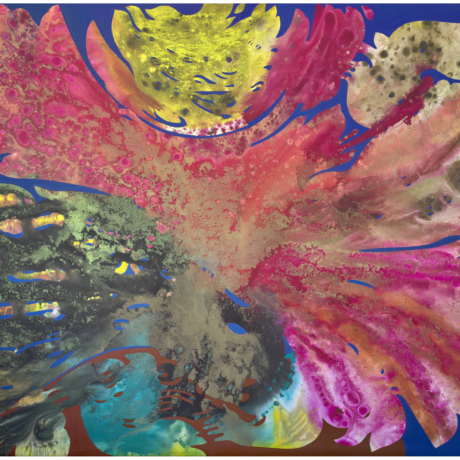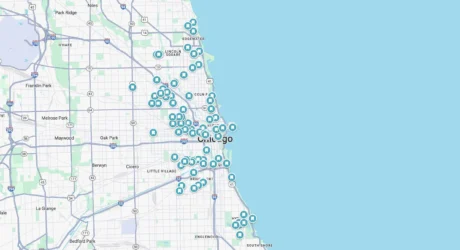Jonathan Lyndon Chase’s collaboration with Acne Studios redefines both the domestic space and the retail experience with a personal capsule collection and poetic installation.
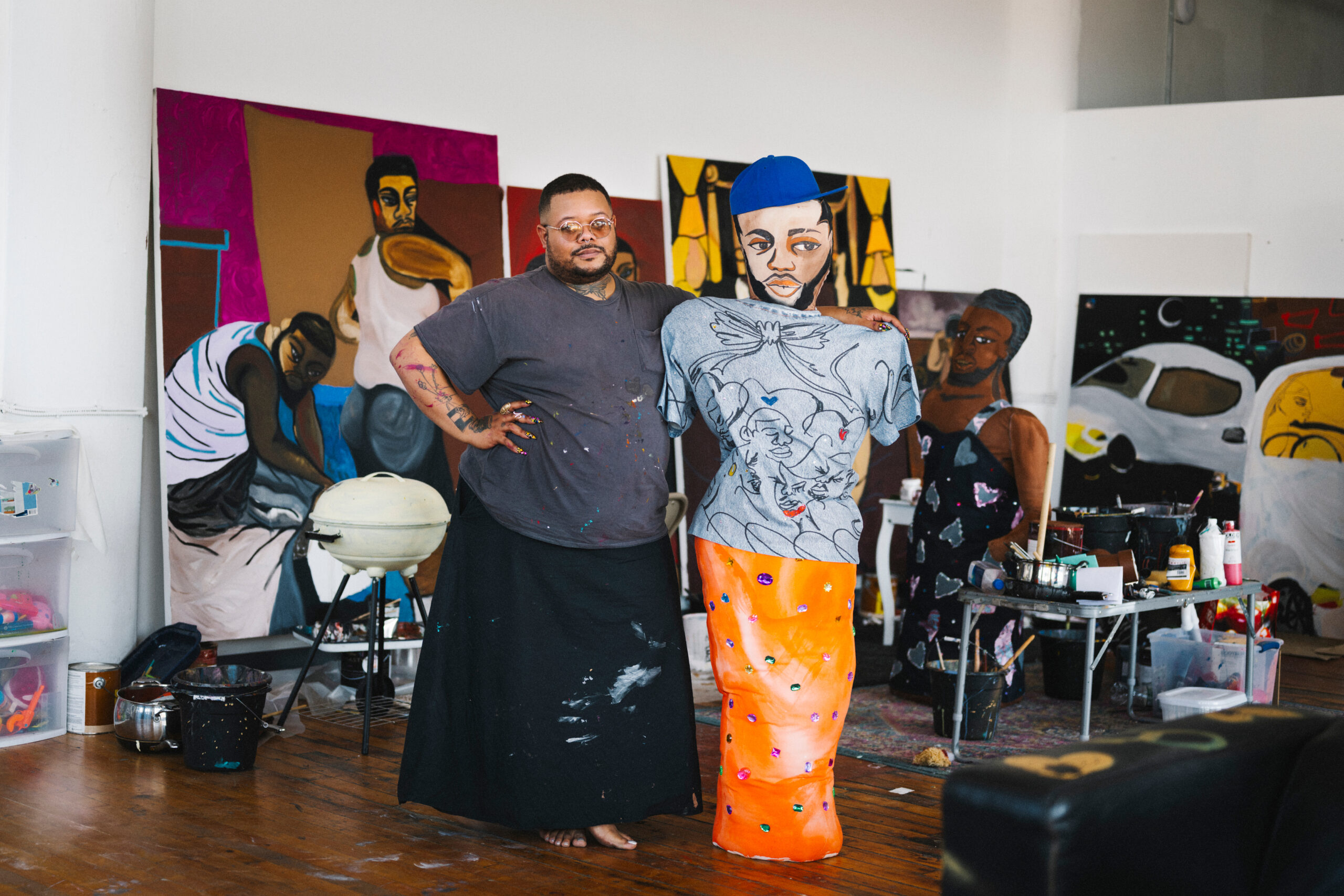
For Jonathan Lyndon Chase, materials are extensions of the body, their tactile, improvised forms unfolding across painting, poetry, sculpture, and installation in a practice rooted in Black queer intimacy and domestic life. Across their oeuvre, the Philadelphia-based artist unsettles the idea of “home” as a stable, safe, or singular site, exposing its long history of exclusion while transforming it into a space of touch, fantasy, and reclamation.
During Frieze New York, roughly sixty defiantly tender works by Chase took over Acne Studios Greene Street, transforming it into a sensuous theatre where fans twisted into new shapes, purses swelled into sculpture, and denim became a portal for memory and play. A continuation of Chase’s ongoing collaboration with the Swedish brand, which began with their scenography for the SS25 womenswear show in Paris last September, the exhibition marked the launch of the ‘Acne Studios Loves Jonathan Lyndon Chase’ capsule collection, where the artist’s expressive illustrations appear across clothing and homeware. Anchored by voluptuous, soft-bodied figures, ceramics, and graffiti-marked found objects, the show challenged not only the domestic space but the logic of retail display itself. Elephant caught up with Chase to discuss queering the showroom, translating intimacy onto fabric, their high school memories of denim, and the strange beauty of creating something meant to disappear.
The ‘Acne Studios Loves Jonathan Lyndon Chase’ capsule is available at Acne Studios Greene Street in New York, with a global release online and in select stores beginning late June 2025.
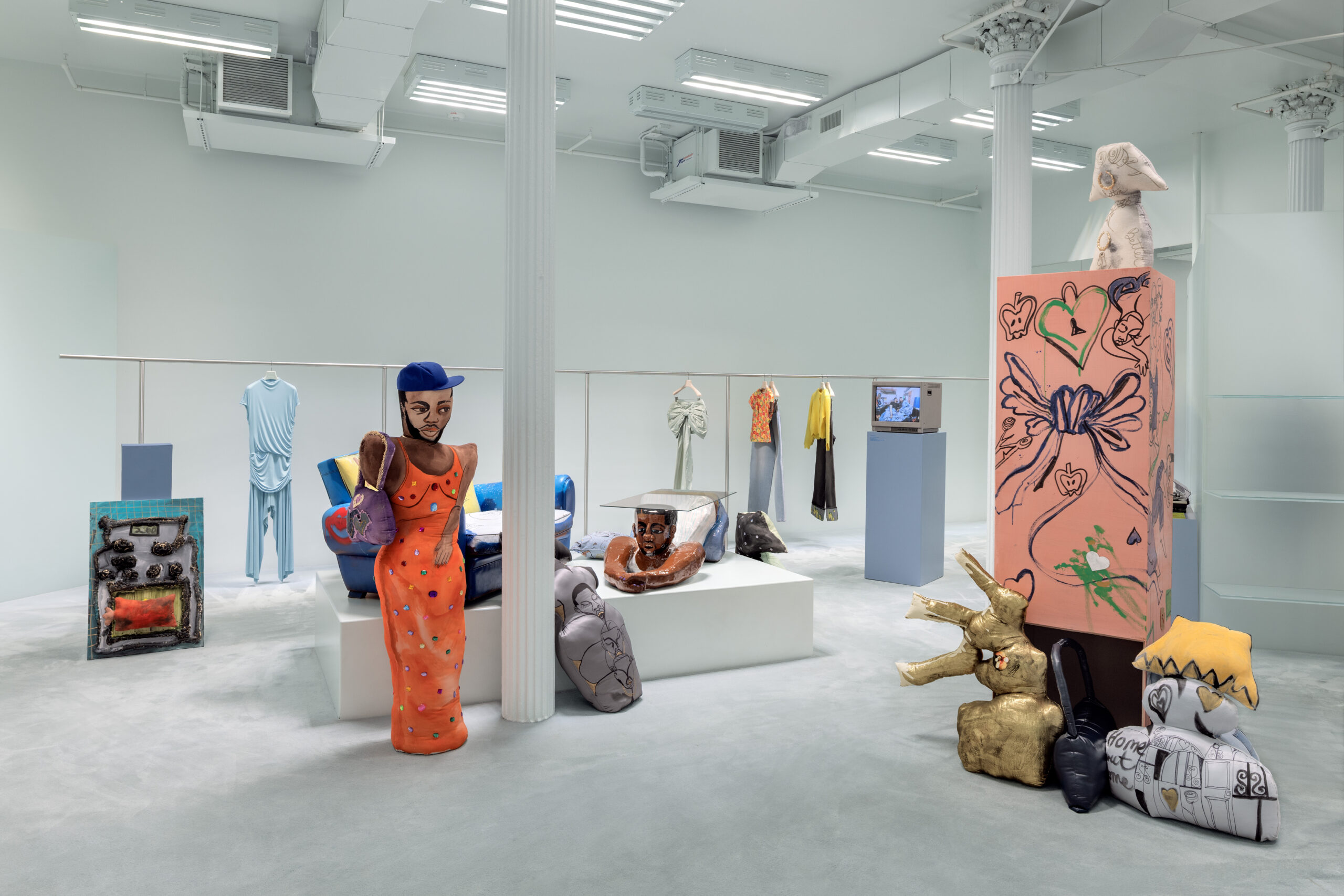
Your relationship with Acne Studios started with the SS25 womenswear show. Did returning for this capsule and exhibition feel like a continuation of that?
Yes, it definitely felt like a continuation of the runway show, but also the next chapter in a story and a new introduction of sorts.
Making environments versus garments—does one feel more personal than the other?
They’re both personal to me, just in different ways. They come from the same emotional landscape. But this was especially meaningful because I’ve never done something like this at this scale, aside from the boxer shorts I made for my solo institutional show, Big Wash, at the Fabric Workshop Museum a few years ago.
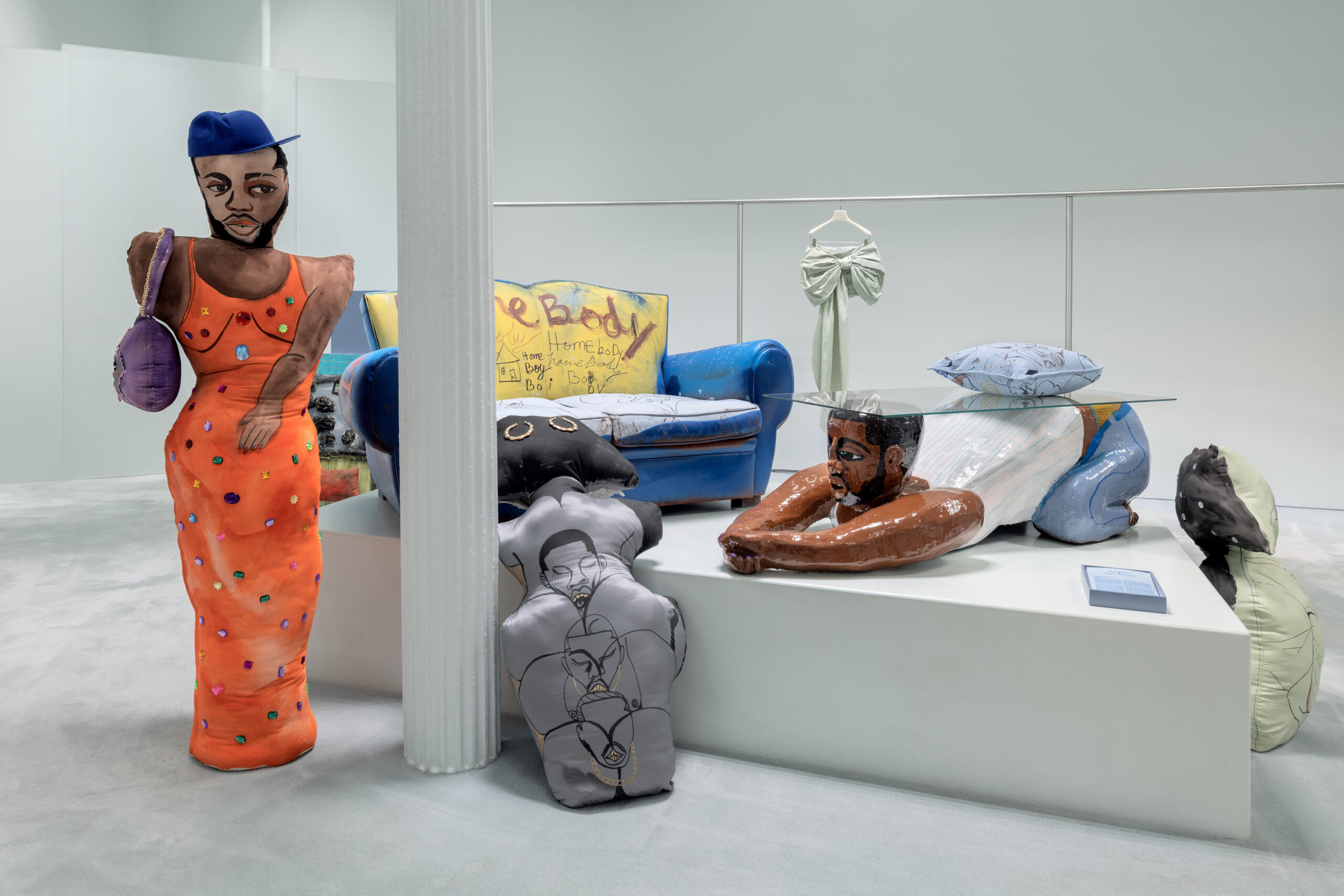
Did the nontraditional setting of the retail space unsettle your approach?
Definitely. Every space I install in brings up its own questions and challenges. There’s a different kind of intimacy when you’re engaging with artwork in a setting like this, outside of the museum. This installation leaned heavily into sculptural objects. There are some two-dimensional works, but I think I was really influenced by the Acne Studios collection itself, as well as the way people enter retail spaces. I was thinking about how to find harmony between the garments and the products in the space. Curating an environment is its own kind of science. I’m still thinking about it, even now. I wanted it to feel like a gradual accumulation, like you’re drawn inward, and then it blossoms outward into a kind of centre stage. The purses and clothes are part of the artwork, too. I was also thinking about chaos and control, about verticality with the suspended sculptures, the height of the things on the ground.
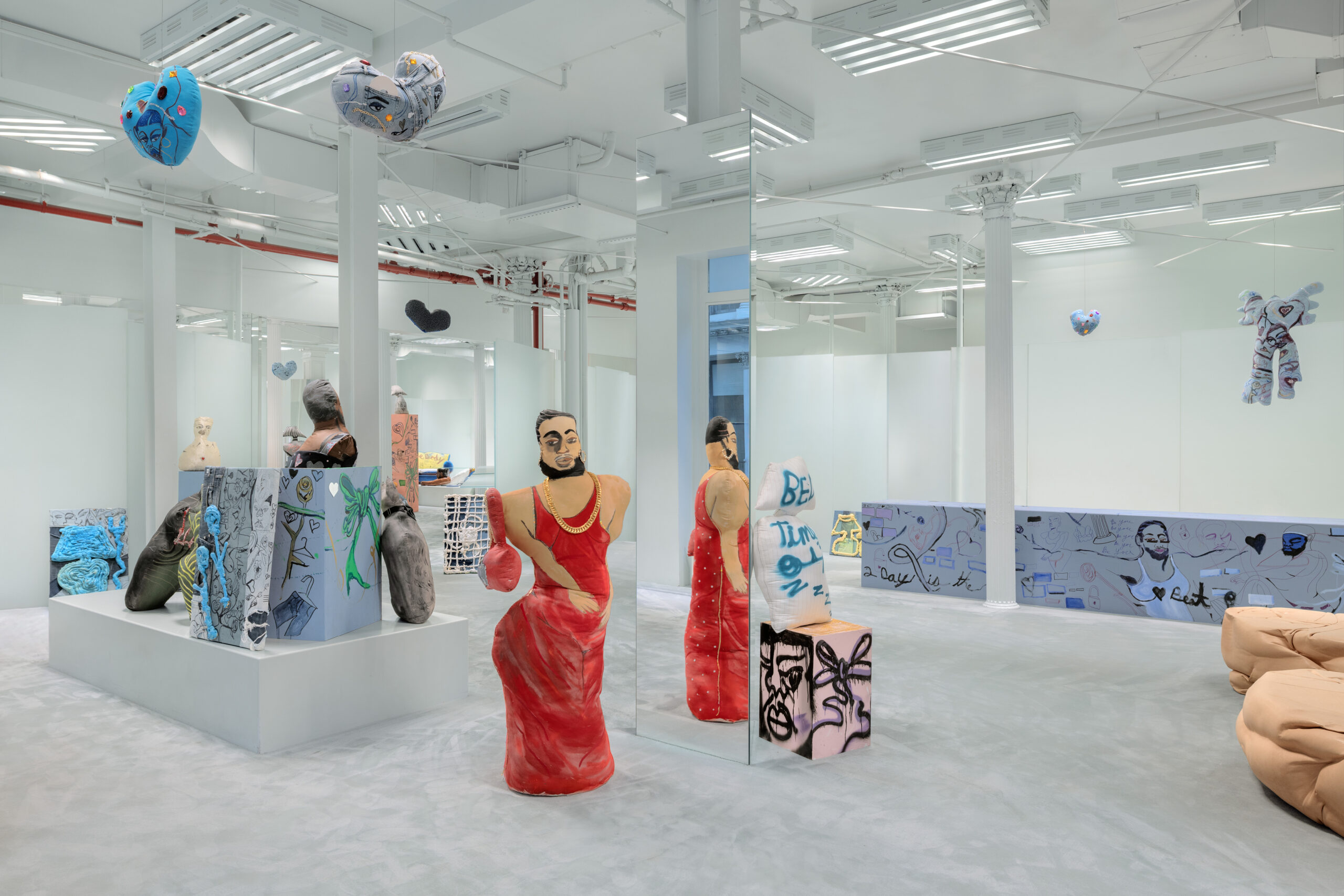
Was temporality something you considered?
Absolutely. It really blows my mind how so much energy and effort go into something so fleeting. It’s beautiful and special and absolutely crazy at the same time, and I love that. It’s something I’m still processing. With gallery or museum shows, it’s up for months. My studio team and I learned a lot from this about how we operate, but also about how fashion creatives operate. In my practice, I think about time in relation to space and the body a lot, so this really resonated. You’ll see I often title works with numbers, or “a.m.” and “p.m.,” or days of the week. I mention night and day a lot, too.
This capsule is your first time translating illustrations directly into a full fashion collection. Did it shift how you think about art living on the body versus around it?
Yes. It raised a lot of conceptual questions, especially around performance. Returning to time, it’s interesting to think about how these drawings will carry memory differently when they’re moving through the world on people’s bodies. Even thinking about the material, someone’s perfume or sweat—those are things I already engage with when talking about the body. I also have a lot of tattoos, and that came to mind too.
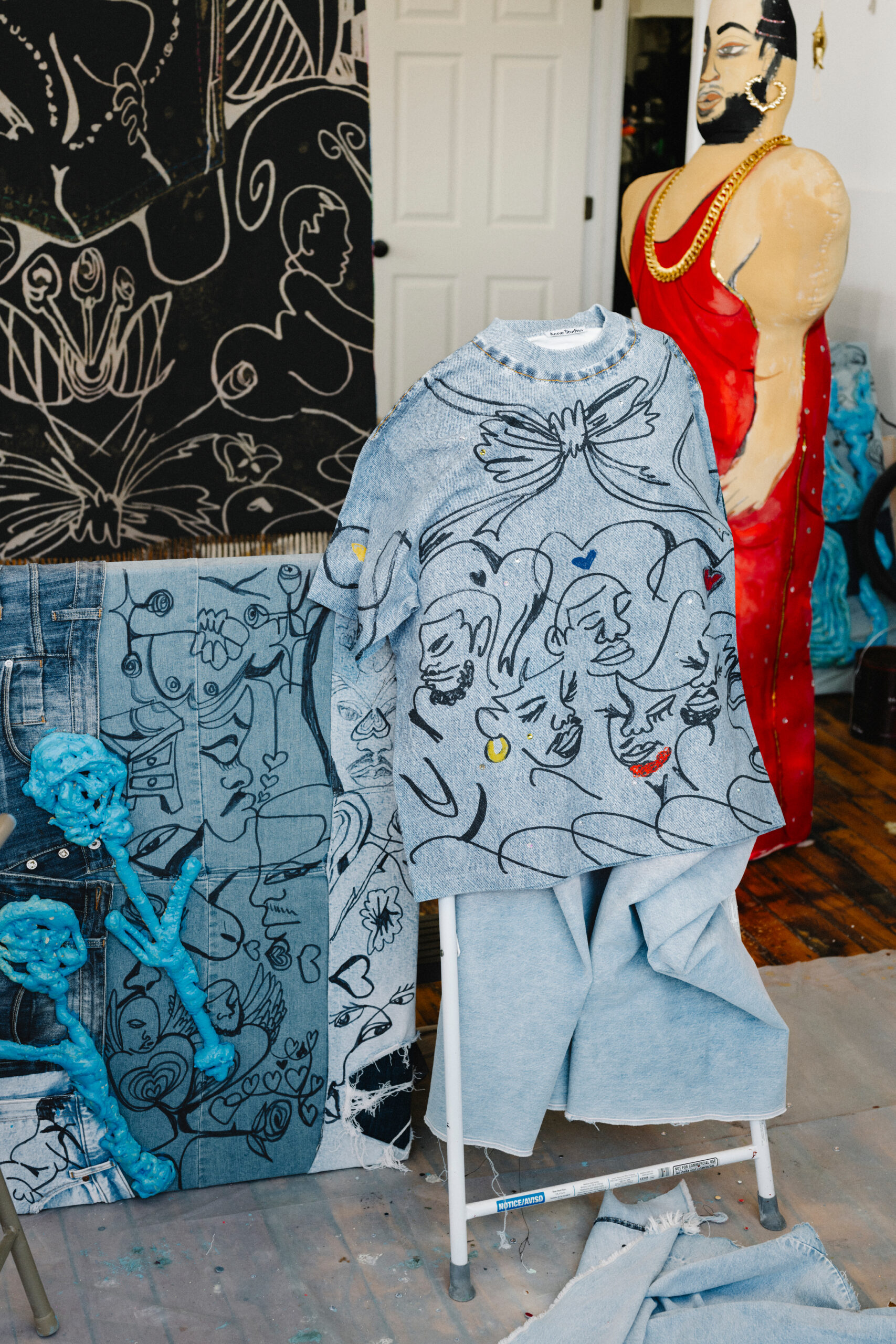
Are there people or memories embedded in these pieces that viewers might not recognise at first glance?
There’s a strong element of nostalgia. The denim reminds me of the late ‘80s and ‘90s, things my friends wore, and in particular, this one photo of my mom that my late dad took of her in a denim jacket. She looks so happy and beautiful and cool. With her big hair, it just fit her so well. I also used to draw a lot on my jeans in high school. I did it constantly during class. It helped me survive, honestly, and helped me build relationships. A lot of people can relate to that, whether they did it themselves or knew someone who did. There are memories from past friends, current friends, past lovers, current lovers.
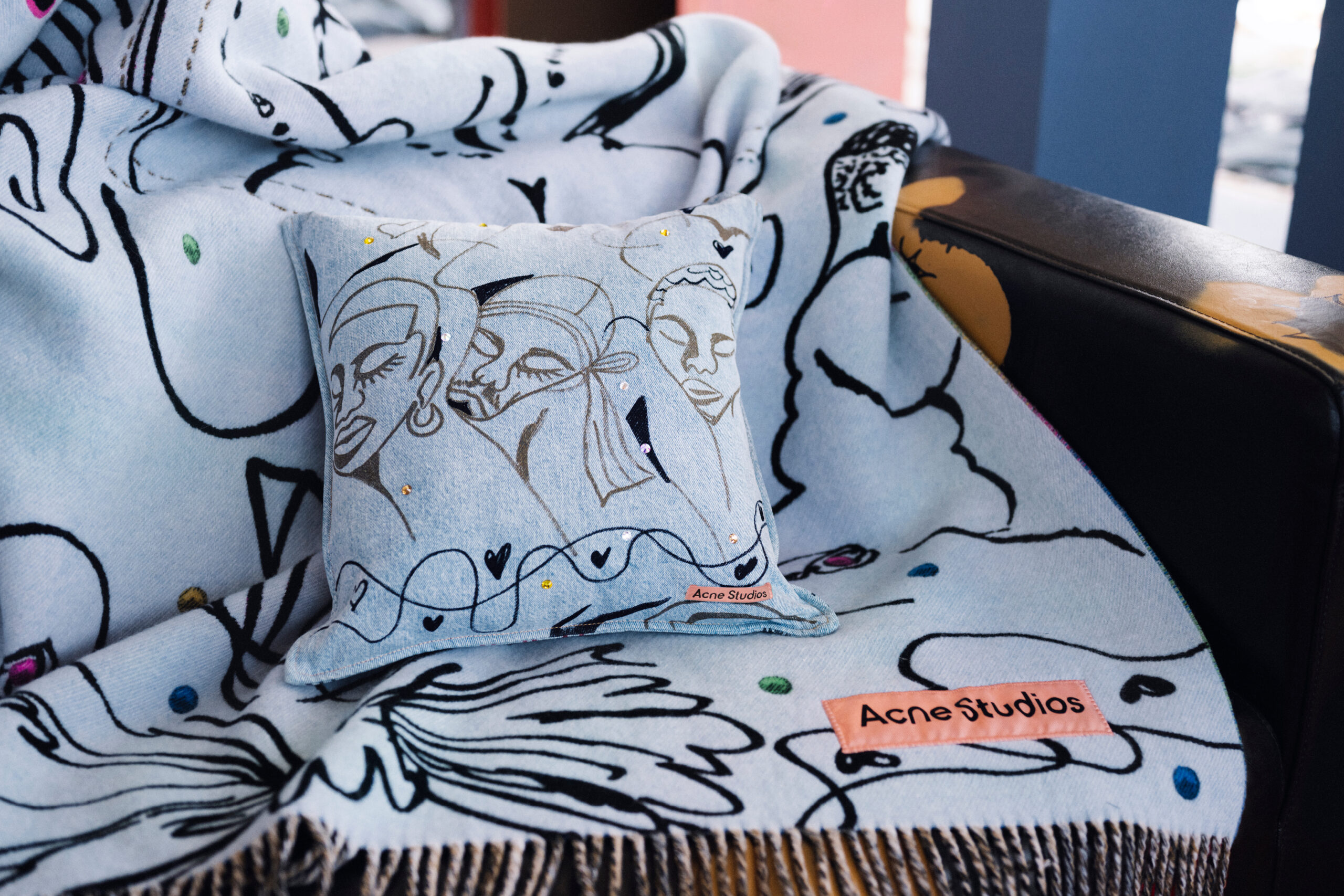
If this exhibition were a room in your dream house, what room would it be?
I feel like I am living in my dream house right now. But if something could be even more over the top, it would probably be the living room or dining room. My current living room and dining room aren’t traditional as they serve multiple purposes: an art-making space, a library, a makeshift stage.
What do you hope lingers after someone leaves Greene Street?
I hope people leave feeling confident, powerful, loved, and empathetic. Also sexy—particularly as a queer Black non-binary person, I want people who look like me and have lived similar experiences to me to feel represented. Queer representation matters and we’ve always been here, in all kinds of spaces, forms, and histories. I want people to think about the history of denim, too, and who gets to tell these stories. We need to stay honest by being ourselves, by honouring what has come to pass, and by thinking deeply about how it shapes us now and our future.
Written by Sahir Ahmed.



